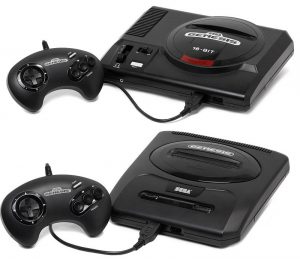Sega Megadrive’s effect on the World
- The Sega Megadrive was the first console to give meaningful worldwide competition to Nintendo’s firm grasp on the home console market.
- The Megadrive was produced over an impressive 14 year retail life span.
- The marketing of the Sega Megadrive produced the first worldwide “console war” (Atari and Mattel had gone head to head years before but almost solely in the US).
- The Megadrive was usually marketed to a more mature audience by offering more games with mature content thus paving the road for video games to become more than a toy or entertainment for children alone.
- The Megadrive can reasonably be credited for turning Sega into a video game and home console powerhouse. (The predecessor, the Sega Master System, never did command a meaningful amount of market share in Japan or North America only in Europe and Australia)
- The inclusion of more mature content in games, predominantly pioneered by Sega for games available on the Megadrive, led to video game rating systems.
- The Megadrive, along with it’s contemporary competitors, helped bring home console gaming more significantly into the mainstream of home entertainment choices.
- The Megadrive platform saw the introduction of one of the most recognisable, prolific and enduring video game characters of all time, Sonic the Hedgehog.
- The Sega CD, 32X and Power Base Converter peripherals expanded the software capabilities of the base system and extended the life of the hardware.
- The Megadrive platform provided powerful graphics processing, multi-layered backgrounds and stereo sound capabilities which were impressive in it’s time. The system was first released in Japan in 1988, North America in 1989 and in Europe in 1990.
- The Sega Channel – This system let subscribers try out and play tons of Megadrive games over a cable network. This was very much ahead of its time and paved the way for modern Internet-based systems like Xbox Live and PlayStation Network
- The Megadrive remains as Sega’s most successful console selling roughly 29 million units worldwide.


